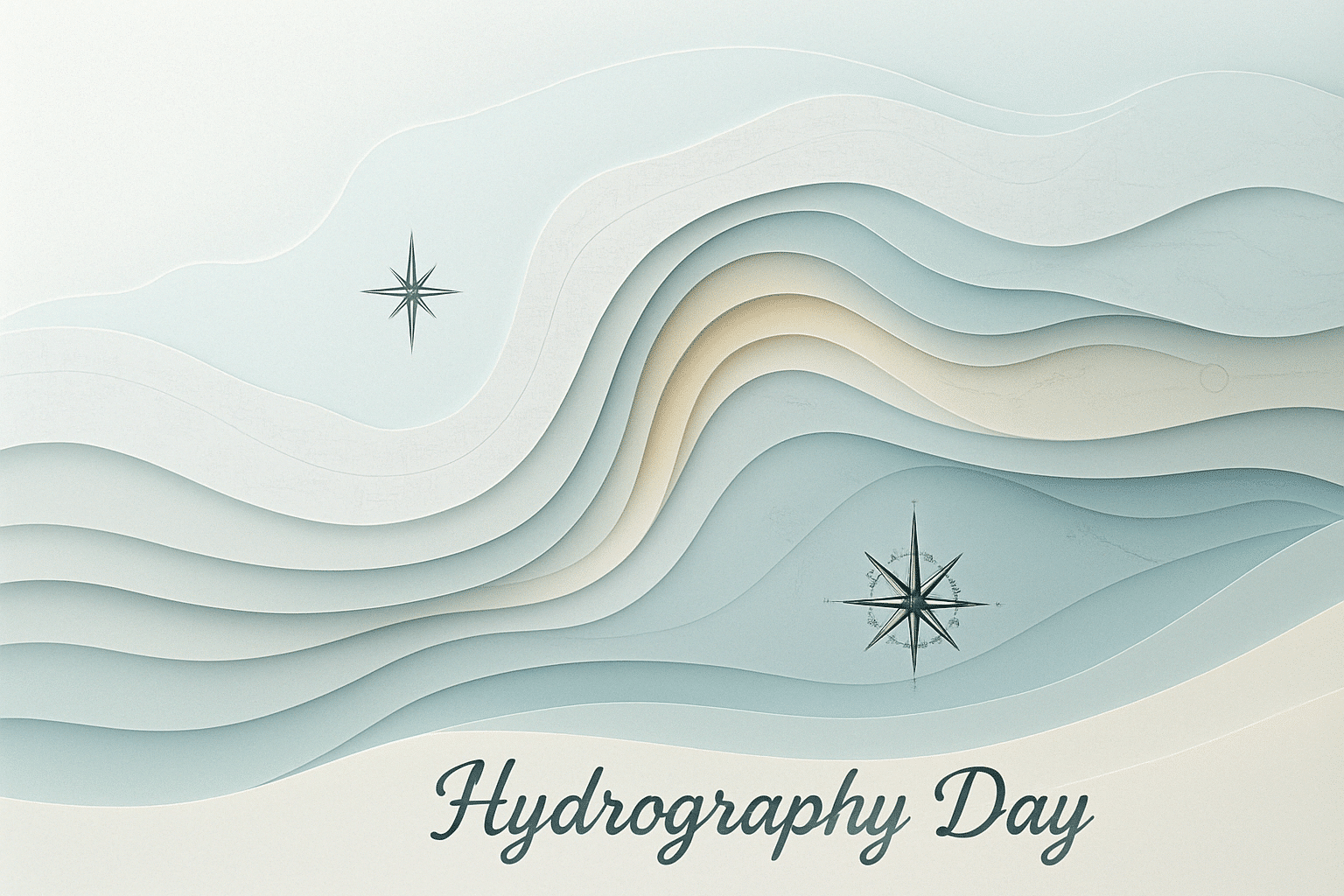What is World Hydrography Day?
World Hydrography Day is held every year on June 21 and is observed worldwide. The day celebrates the science of hydrography, which involves the measurement and description of the physical features of oceans, seas, coastal areas, lakes, and rivers. Hydrography plays a crucial role in ensuring safe navigation, supporting marine conservation, and facilitating sustainable development.
History and Origin
World Hydrography Day was established by the International Hydrographic Organization (IHO) in 2005 and is celebrated annually on June 21. The date commemorates the founding of the IHO in 1921, highlighting over a century of international cooperation in hydrography. The United Nations General Assembly recognized this observance in Resolution A/60/30, emphasizing the significance of hydrography in promoting safe navigation and protecting the marine environment.
Each year, World Hydrography Day focuses on a specific theme to spotlight different aspects of hydrography. For instance, the 2024 theme was “Hydrographic Information – Enhancing Safety, Efficiency and Sustainability in Marine Activities,” underscoring the role of hydrographic data in modern maritime operations.
Who participates in World Hydrography Day?
- Hydrographic organizations: Conduct surveys, produce nautical charts, and disseminate hydrographic information.
- Maritime authorities: Utilize hydrographic data to ensure safe and efficient navigation.
- Educational institutions: Offer programs and research opportunities in hydrography and related fields.
- Environmental agencies: Use hydrographic information to monitor and protect aquatic ecosystems.
- General public: Engage in activities and events to learn about the importance of hydrography.
Slogans and Themes
World Hydrography Day emphasizes themes such as safety, sustainability, and international cooperation. Slogans like “Mapping our seas, oceans and waterways – more important than ever” and “Hydrography – the key to well-managed seas and waterways” capture the essence of the observance. The focus is on highlighting the critical role of hydrography in various aspects of maritime and environmental management.
Colors, Symbols and Patterns
Colors
- Blue: Represents the oceans and water bodies.
- Green: Symbolizes sustainability and environmental stewardship.
- White: Denotes clarity and precision in data collection.
Symbols
- Nautical charts: Illustrate the importance of accurate mapping for navigation.
- Surveying instruments: Reflect the tools used in hydrographic measurements.
- Waves: Emphasize the dynamic nature of aquatic environments.
Patterns
- Grid lines: Indicate the systematic approach to mapping and data collection.
- Contour lines: Represent depth variations and underwater topography.
- Data points: Highlight the precision and detail involved in hydrographic surveys.
Most used hashtags
- #WorldHydrographyDay
- #Hydrography
- #SafeNavigation
- #MarineConservation
- #SustainableSeas
How do you celebrate World Hydrography Day?
- Attend educational events: Participate in seminars, workshops, or lectures about hydrography.
- Visit maritime museums: Explore exhibits that showcase the history and significance of hydrography.
- Engage in community activities: Join local initiatives focused on waterway conservation and awareness.
- Share information: Use social media to spread knowledge about hydrography and its importance.
- Support hydrographic research: Contribute to organizations or institutions dedicated to advancing hydrographic studies.
Why is World Hydrography Day important?
World Hydrography Day is important because it brings attention to the vital role hydrography plays in our understanding and management of aquatic environments. Accurate hydrographic data is essential for safe navigation, which is crucial for global trade and transportation. It also supports environmental protection efforts by providing detailed information about marine ecosystems, aiding in conservation and sustainable resource management.
Moreover, hydrography contributes to disaster risk reduction by informing flood modeling and coastal planning. In the context of climate change, hydrographic data helps monitor sea-level rise and its impacts on coastal communities. By celebrating World Hydrography Day, we acknowledge the contributions of hydrographers and emphasize the need for continued investment in hydrographic research and infrastructure to ensure the safety, sustainability, and resilience of our interactions with aquatic environments.
Features
June 21: Hydrography Day
Why do you keep falling for the same type?
Read the article Lovemaps: the hidden blueprint of our love.

